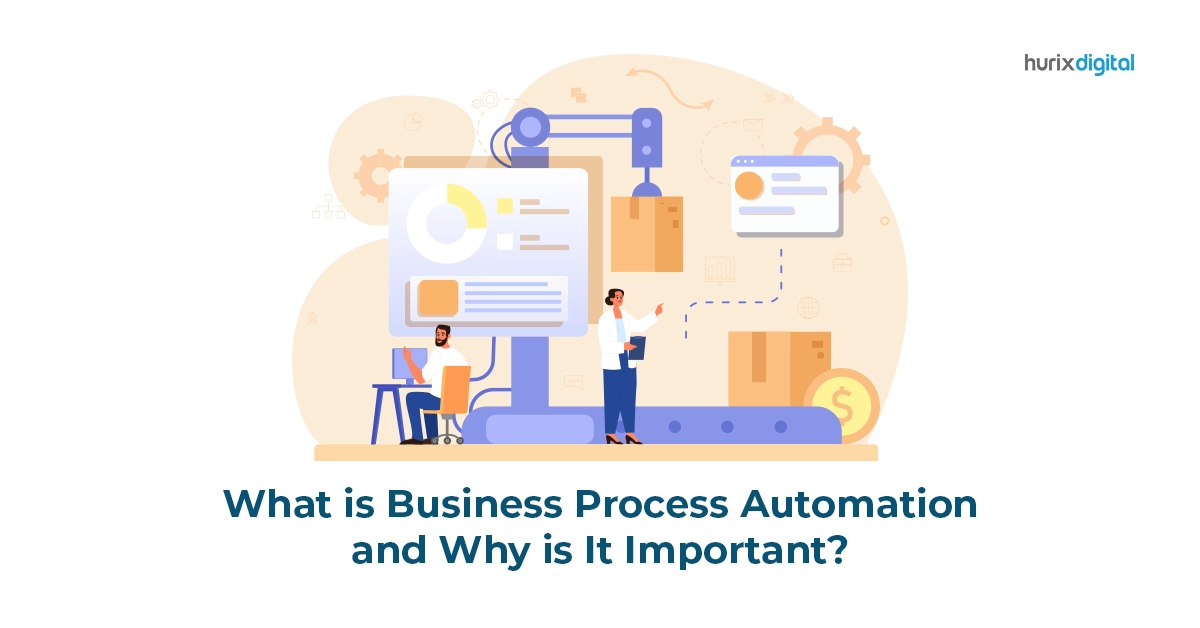
What Is Business Process Automation and Why Is It Important?
Summary
Understand the concept of business process automation (BPA) and its significance in improving efficiency, reducing costs, and enhancing operational effectiveness.
Business Process Automation (BPA) offers businesses a path to heightened efficiency, cost savings, and smooth digital transition. In today’s landscape, it not only streamlines business processes but also enhances operational efficiency, driving improved results across various facets of the organization.
In fact, studies show that the global BPA market size is estimated to reach $19.6 billion by 2026, with a compound annual growth rate (CAGR) of 12.2% during 2022-2026. This highlights the rising demand and significance of automation in the business world.
In this post, we will explore what BPA is all about and why you should consider investing in BPA software.
Read on!
Table of Contents:
- What Is Business Process Automation?
- Business Process Automation Use Cases
- Top 10 Benefits of Business Process Automation
- Wrapping Up!
What Is Business Process Automation?
Business Process Automation refers to the use of advanced technology to automate complex processes with minimal human intervention. Simply put, it refers to shifting the responsibility of completing routine and repetitive tasks from humans to machines.
Here, a business process refers to a series of actions or an activity undertaken to achieve a particular organizational objective. It can be anything from manufacturing a product to integrating fresh talent or engaging with prospective customers.
By significantly reducing or eliminating manual intervention, BPA empowers you to standardize and streamline workflows, leading to amplified efficiency and cost savings. Due to this capability, BPA is often referred to as workflow automation.
Business Process Automation Use Cases
BPA finds extensive applications in various domains, including marketing and sales, human resources, finance, operations, customer service, data entry, supply chain management, and more.
Generally, tasks that are time-critical, high volume, repetitive, demand compliance, involve numerous stakeholders, and require audit trails are well-suited for digital process automation.
The best part is that you automate any rule-based business process as machines excel in adhering to well-defined procedures. Some of the examples include:
- Automate onboarding process
- Invoice processing
- Document routing
- Expense reporting
- Transaction monitoring
- Automated helpdesk tools
- Automated marketing messages
- Automated shipment routing
Also Read: How RPA is Transforming Business Processes: Benefits and Use Cases
Top 10 Benefits of Business Process Automation
If you wish to have a growing roster of delighted customers, prioritizing process excellence becomes important. BPA is a simple yet powerful strategy to get started on that path.
From increased compliance and productivity to better performance and customer experience, BPA benefits spread to every facet of the organization.
Here are ten compelling reasons for investing in BPA:
1. Enhanced Efficiency
With BPA, you can complete arduous tasks with minimal resources. It delivers quicker and more reliable results at reduced costs, leading to improved overall efficiency. Furthermore, delegating mundane tasks to machines results in higher productivity and increased profits.
By leveraging technologies to aid in certain tasks, employees can amplify their productivity within the same timeframe. Also, they can spend more time on activities that add value to your customers.
2. Cost Reduction
BPA helps in cutting down operational costs by reducing the need for extensive human resources. It also minimizes the occurrence of errors that might lead to financial setbacks.
Approximately 31% of business executives report decreased labor expenses as a result of process automation. Companies enjoy cost reductions because of the reduced labor demands.
By efficient time utilization, you can either boost production without scaling your workforce or trim payroll expenses while sustaining current output levels.
3. Time Savings
Automating time-consuming tasks frees up resources, enabling employees to work smarter, not harder. About 74% of engineering and IT leaders believe process automation saves almost 30% of the time.
By charging machines with performing rule-based, recurrent tasks, your staff can focus on more strategic and creative endeavors that drive business growth.
4. Improved Accuracy
Even highly skilled and capable employees can make mistakes due to absent-mindedness, lack of attention, or multitasking. But unlike humans, machines never get distracted or tired.
BPA minimizes the risk of errors that can have detrimental effects on your business outcomes. It ensures a higher level of accuracy and consistency in business operations.
5. Streamlined Workflows
BPA streamlines complex workflows, enabling smoother coordination between various departments. This leads to enhanced collaboration and communication within the organization.
Transparent accountability, tailored notifications, insightful analytics, and faster turnaround periods facilitate the elimination of wasteful activities. This enables employees to focus on improving tasks that add significant value.
6. Enhanced Compliance
BPA helps in ensuring regulatory compliance by implementing standardized processes. This minimizes the risk of non-compliance penalties and legal repercussions.
Furthermore, BPA maintains a meticulous record of each aspect of a business process. These comprehensive details can be showcased to demonstrate compliance during audits.
7. Improved Customer Experience
In any industry, customer satisfaction stands as a key differentiator. Focusing on operational and process excellence helps you surpass customer expectations effortlessly.
By expediting response times and streamlining customer-facing processes, BPA contributes to an improved customer experience.
When you consistently meet promised standards, it leads to higher customer satisfaction and loyalty. Consequently, customers are more likely to develop a preference for your business.
8. Better Scalability
Manual procedures lack scalability and can readily impede business expansion. For instance, the manual invoicing of a hundred clients demands significantly more resources than invoicing just ten, thereby placing a strain on companies.
BPA, on the other hand, enables businesses to scale operations seamlessly. Machines can simultaneously execute multiple tasks at a considerably faster rate than any human being.
They help you accommodate increased workload and evolving business demands without compromising efficiency or quality.
9. Improved Business Process Analysis
With BPA, you can collect and analyze valuable data for business impact analysis. It also enables you to monitor the progression of a business process.
This makes it easier to refine processes for superior and swifter business results. Furthermore, it helps you make informed decisions and implement strategies for continuous improvement.
10. Competitive Advantage
BPA helps organizations establish themselves as industry leaders in terms of operational excellence. Leveraging BPA provides you with a competitive edge by enabling you to deliver products and services more efficiently.
Also Read: How RPAs are used for Business Automation?
Wrapping Up!
In the rapidly evolving business landscape, Business Process Automation has become indispensable for organizations seeking to stay competitive and agile. However, most businesses encounter employee resistance due to concerns about job security.
But we recommend that every company must automate and adjust to the rapid technological advancements shaping the modern world.
Elevate your business to new heights with Hurix Digital, promising a delightful automation journey. Our BPA solution is both scalable and cost-effective, propelling enterprise-wide transformation.
Schedule a demo to learn more!

Vice President – Digital Content Transformation. He is PMP, CSM, and CPACC certified and has 20+ years of experience in Project Management, Delivery Management, and managing the Offshore Development Centre (ODC).




